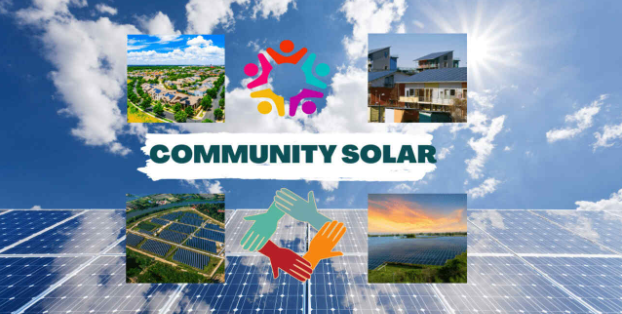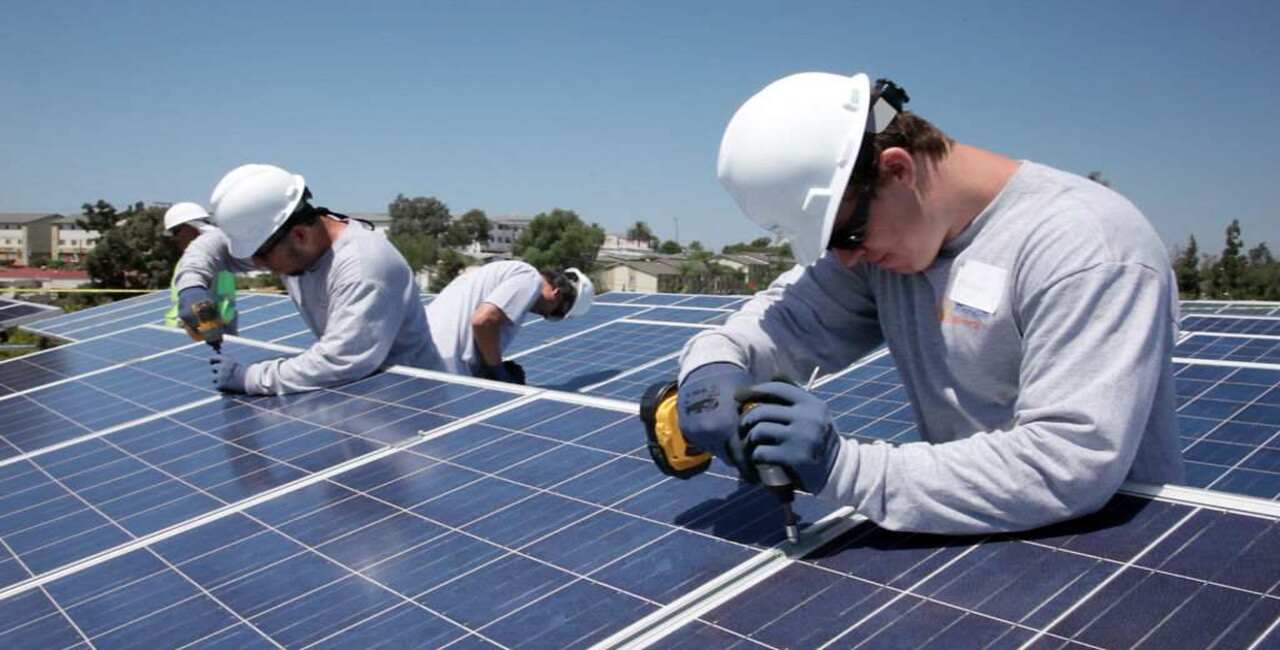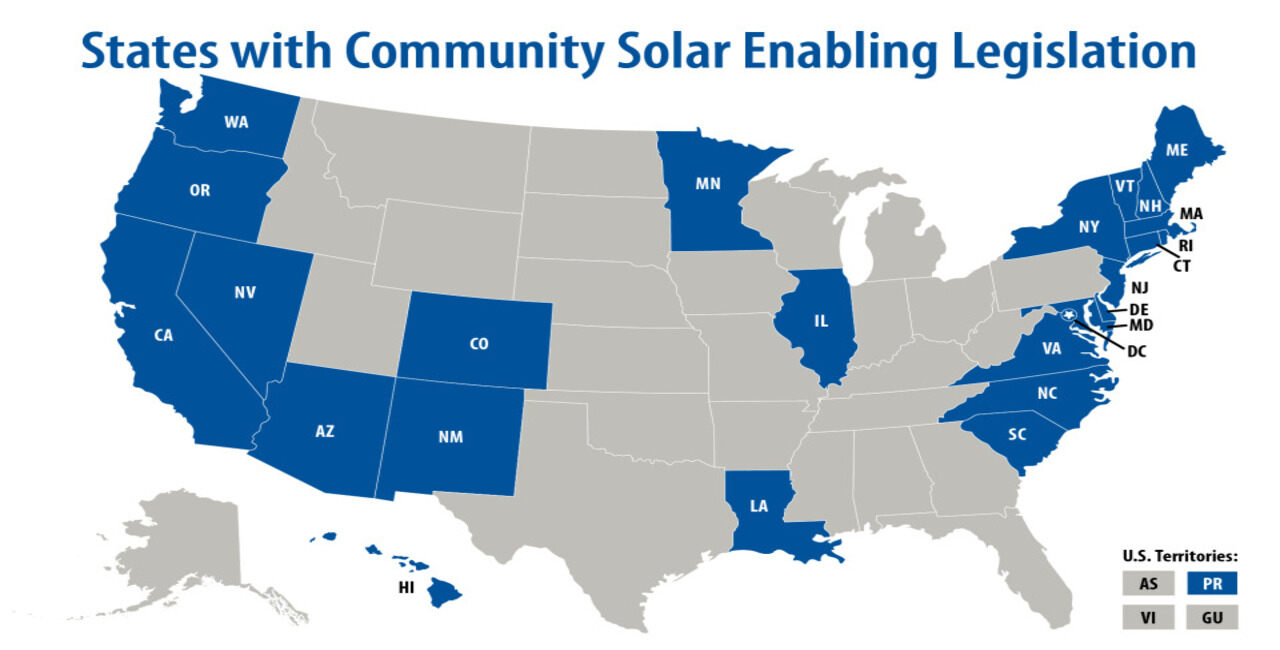
The U.S. is experiencing a solar surge like never before and community solar is emerging as one of the most reasons for this development in the clean energy revolution.
Unlike traditional rooftop solar which requires homeownership, significant upfront costs and suitable roofing, community solar opens the door for millions of Americans who have historically been left out of the solar equation especially renters, low-income households and those living in shaded or multi-family properties.
Community solar allows people to subscribe to a portion of a shared solar project which is located off-site most of the time and receive credits on their utility bills that saves money while supporting renewable energy.
According to the U.S. Department of Energy community solar projects could help power the equivalent of five million homes by 2025. As of early 2025, U.S. community solar capacity is approximately 7.8 GW and the number is growing quickly. College students renting apartments now along with rural farmers and urban low-income households. Community solar is proving that clean energy can be very inclusive.
It’s an economic and climate justice solution because of the way it connects people to local clean power. Community solar is promoting energy democracy, local resilience and leading a pathway to meet the U.S.’s climate and equity goals.
Community solar also known as shared solar is a solar power project that multiple people can subscribe to. Now instead of installing panels on the own roof the participants can subscribe to a portion of a shared solar farm and in return receive credits on their electricity bill based on the amount of energy their share produces. Third-party developers, utilities, or cooperatives are responsible for building and operating these projects in most cases.
Community solar is really powerful in urban areas and rental communities where traditional rooftop solar is not an option. It makes clean energy accessible to more people and offers a practical alternative to ownership models.
One key mechanism that makes community solar work is virtual net metering. Through VNM customers receive credit for solar energy produced at a location other than their home treating the shared solar project as if it were connected to their meter.
Shared solar programs is changing the way how energy access is defined usually. It has been removing barriers of ownership, geography issues and upfront costs. Now it's about being a part of a clean energy community rather than just about having your own little panels on the roof.
As of 2025 over 7.8 gigawatts (GW) of community solar capacity has been installed across 44 states with more than 4.5 million U.S. homes currently participating or deemed eligible.
The leading states are New York, Minnesota, and Massachusetts have been trailblazers by enacting strong state-level policies and incentives to encourage the development of community solar programs.
In the past year alone the U.S. added more than 1.5 GW of community solar despite facing regulatory and interconnection challenges. States such as Illinois, Colorado, and Maryland are quickly increasing their portfolios backed by legislation revisions and extra funds from the Inflation Reduction Act and the Justice40 initiative.
These trends signal that community solar is no longer a niche concept—it’s a rapidly growing force in the clean energy landscape.
These are enough signs to prove that community solar is now no longer niche but a rapidly growing force for clean energy.

Community solar does not only just benefit the environment it is also a powerful driver of local economies and job creation.
The recent data shows that community solar projects have generated over $2.1 billion in total economic impact across the U.S. These projects support approximately 14,000 clean energy jobs in areas like construction, engineering, customer support, project management, and long-term operations.
What makes these jobs especially impactful is how localized they are. Unlike large, centralized power plants community solar projects are mostly smaller in scale and built closer to the people who have subscribed. This results in job creation in smaller towns, rural communities and neighbourhoods which need it the most.
In rural areas community solar also offers a steady new income stream. Landowners can lease their land to developers which helps them earn passive income while helping the region meet clean energy goals. These projects also bring increased property tax revenues, better infrastructure, and energy independence for the community.
There are programs like Colorado’s Solar Rewards Community that have helped expand clean energy access while also creating skilled jobs in counties that have been historically overlooked. The Illinois Solar for All initiative combines solar adoption with workforce training opening doors for individuals in marginalized communities to step into solar careers.
Job growth, economic development and energy innovation make community solar much more a sustainable solution. It’s a meduim for community upliftment creating opportunity where it’s needed most. Community solar drives lasting economic value across the country through jobs needed at solar installations and lease agreements with local farmers.

Community solar is about the fair access to energy and not just about clean energy.
Since most of the time solar programs have mainly served wealthier homeowners who could afford rooftop installations and had the right kind of property. That left out millions of people especially renters, people of color, and those in low- to moderate-income households.
Community solar changes this. How?
Community solar brings solar power to people who traditionally haven't had the chance to go solar. Many programs now include specific spots known as carve-outs which are reserved for low- to moderate-income households. These programs make it easier for families to join by offering:
This approach aligns with the federal Justice40 Initiative, which aims to deliver at least 40% of the benefits from federal climate and energy investments to disadvantaged communities. Community solar is now one of the clearest paths toward reaching that goal.
The economic and environmental benefits are equally powerful.
When communities use solar energy instead of fossil fuels, they are helping to reduce carbon emissions which is essential for fighting climate change. Community solar also helps improve air quality in neighborhoods that have long been affected by pollution from power plants or highways.
And cleaner air means better health. In many areas community solar programs have the potential to lower asthma rates, reduce hospital visits and improve overall well-being considering children and seniors.
Some projects are even designed with extra environmental perks like planting trees around the solar array or using land for both solar and agriculture.
In the bigger picture equitable community solar programs aren’t only helping people save money but they’re also improving lives, strengthening neighborhoods and giving more Americans a real stake in the clean energy future.

Colorado’s community solar efforts have been focusing on rural inclusion. Because of the partnership with co-ops and landowners this state has enabled dozens of projects that serve farm communities, tribal nations, and low to medium income subscribers.
One notable project is the San Luis Valley Community Solar Garden where low-income residents receive up to 50% savings on their utility bills. The program also supports local labor and apprenticeship programs.
New York’s Community Distributed Generation (CDG) model emphasizes accessibility and climate justice. The Solar for All initiative allows qualifying low-income residents to subscribe to solar for zero cost and save their electricity bills.
Also the customer feedback has been very positive with many reporting over $10–$30 monthly savings and resulting in increased awareness about the energy use.
Minnesota’s Community Solar Garden (CSG) program is backed by Xcel Energy which is one of the largest in the U.S. It allows anyone with a utility account to subscribe. The state's performance-based incentives and simple interconnection processes has made it a national model.
Subscribers who are homeowners or renters receive consistent billing credits. This program has also drawn support from businesses, cities, and schools.
This case study proves that with the right policy, support, and design, community solar can be serve the community first.
Community solar is becoming smarter, more transparent, and interactive all thanks to the fast-paced tech.
One of the key challenges in community solar is accurately tracking energy production and fairly distributing credits among the subscribers. Now Blockchain technology is being explored as a solution.Blockchain enables transparent tracking of each subscriber’s share of solar generation by creating a secure and tamper-proof ledger.
This helps reduce billing disputes, build trust between utilities and users, and minimize administrative costs.
Blockchain could play a major role in scaling the community solar if more projects adopt this system.
Artificial intelligence is making its mark. AI-powered algorithms can analyze consumption patterns and weather forecasts to predict demand more accurately allowing operators to balance supplyand make smarter decisions about load management. For community solar projects serving multiple users, this level of insight is really valuable during periods of fluctuating sunlight and grid congestion.
Agrivoltaics is the practice of growing crops beneath solar panels.
Sounds like something out of a sci-fi movie right?
Community solar developers in places like Colorado and California are piloting this dual-use land model. It offers a unique advantage of preserving farmland while also generating renewable energy. Farmers benefit from shade-tolerant crops, improved soil moisture, and an additional income stream hence creating a sustainable solution for both agriculture and energy production.
The enrollment process is also being transformed. Today a lot of community solar providers offer mobile apps and online platforms where users can deem the benefits like explore projects, check availability, estimate savings, and sign up in just minutes. These tools are removing barriers and helping more people access clean energy without the need for paperwork or sales calls like the old times.
These solar energy innovations are developing at a fast pace making community solar more accessible and efficient than ever before.

Now you might think community solar is leading and building its pace with all these policies and advantages it brings but in reality community solar is facing real challenges that lead to slow adoption and little impact.
Let’s educate ourselves and learn how.
One of the biggest hurdles with community solar is the lack of clear and consistent policies across states. In many places community solar regulations are still evolving or are nonexistent leaving developers in limbo.
The projects often face extended solar permitting and approval timeline even in states with supportive legislation that can sometimes stretch to months or years. These delays can discourage investment and make project planning unpredictable.
Bringing a new solar project online isn’t as simple as flipping a switch. Grid interconnection still remains as one of the most complex aspects of community solar development.
Utility companies might ask for detailed studies, set strict technical rules or even charge high fees which can increase costs and cause delays. In many areas the power grid is old or overcrowded so adding new solar projects requires major upgrades.
Not all utilities are eager to embrace community solar. In some cases they view it as direct competition specially in deregulated markets. Without strong policy mandates the utilities may restrict access to billing platforms or subscriber data making it hard to manage credits and billing transparently. This friction slows down program expansion and can frustrate the developers as well as the customers.
Many Americans still don’t know what community solar is. The outreach efforts are inconsistent, and confusion with rooftop solar leads to a lot of missed opportunities. Education and marketing are essential in this case to close this knowledge gap and build trust among consumers.
Community solar challenges must be addressed through better policy, utility cooperation and consumer education if we are to realize the full potential of clean energy.
If you're interested in saving money and going green then subscribing to a community solar project is often simple:
If you're a developer, co-op, or landowner, launching a shared solar project involves:
Is community solar good?
Yes. It offers clean energy access, cost savings, and promotes local resilience without needing rooftop installation.
Who owns community solar projects?
They’re typically owned by third-party developers, utilities, or local cooperatives. Subscribers pay for a share, not ownership.
What are the best community solar companies?
Some leading names include Arcadia, Nexamp, and Clearway Energy—though local providers often offer better terms.
Why is community solar cheaper?
Community projects operate at a larger scale and receive incentives. Savings are passed on to subscribers through bill credits.
How many kW per solar panel?
Standard solar panels range from 350 to 450 watts, so a 1 kW system typically requires 2–3 panels, depending on technology.

Community solar is more than just another energy trend. It’s a cornerstone of the future clean energy movement. It aligns environmental action with economic opportunity and social equity, giving millions of Americans a chance to go solar without barriers.
From rural communities to urban renters, from tech innovations to economic development the benefits of community solar are actually undeniable. With continued policy support, public awareness, and utility cooperation community solar has the power to reshape how we share and benefit from clean electricity.
At ARKA 360, we believe in democratizing energy access. Our solar design & proposal software supports developers in designing efficient and equitable solar projects to be community-focused and future-ready.













